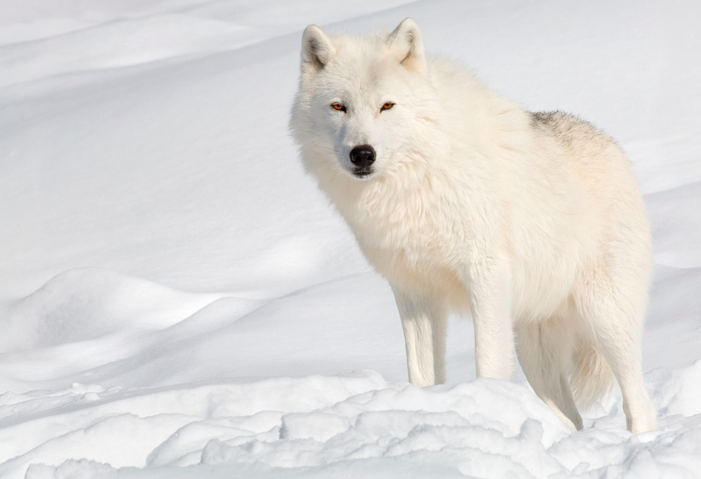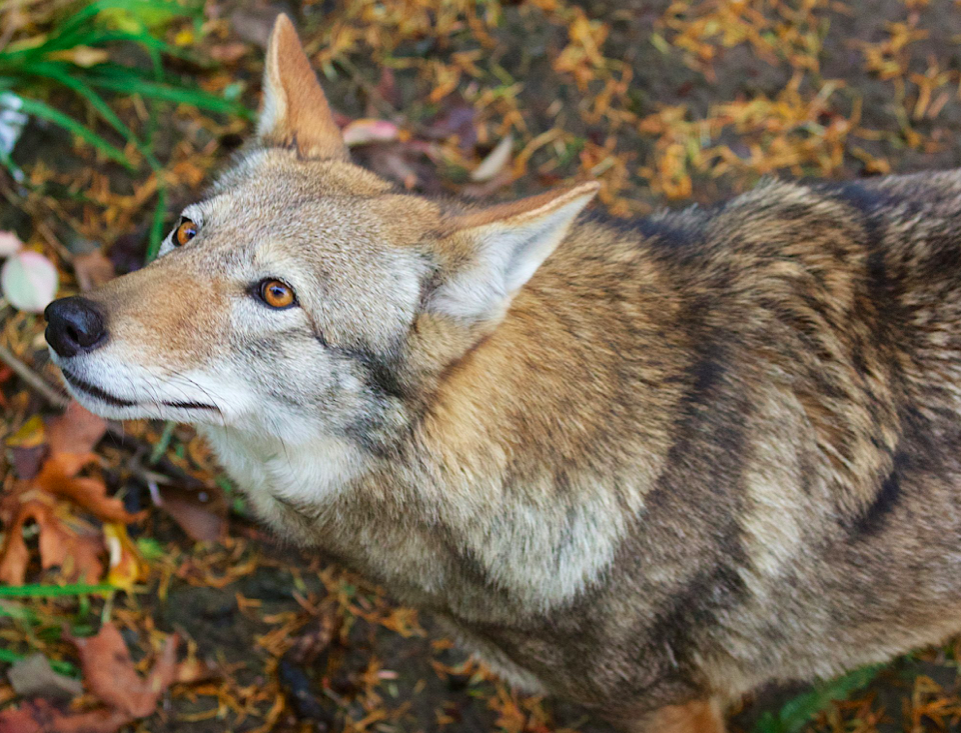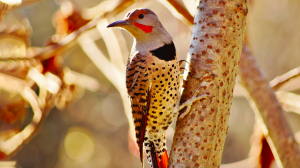Wolf Subspecies: Understanding the Diversity of Wolves

Introduction
Wolves, majestic creatures of the Canidae family, are known for their intelligence, hunting prowess, and unique pack structure. Various subspecies exist within the wolf species, each with distinct characteristics, habitats, and conservation status. In this opportunity, we will delve into the world of wolf subspecies, exploring their diversity, behaviors, and the conservation efforts surrounding them.
What is a Wolf Subspecies?
A wolf subspecies refers to a genetically distinct population of wolves that have evolved in specific geographic regions, adapting to their unique environments over time. These subspecies often possess physical, behavioral, and ecological traits that set them apart from other wolf populations.
Characteristics
Wolf subspecies exhibit variations in size, coat coloration, and overall adaptations to their respective habitats. These dissimilarities can be attributed to climate, prey availability, and geographic isolation. While all subspecies share similarities, their distinctions are crucial to their survival and understanding of their ecological roles.
Common Wolf Subspecies
There are several notable wolf subspecies found across different parts of the world. Let’s take a deep look at the most well-known wolves:
Gray Wolf (Canis lupus)
The Gray Wolf, scientifically known as Canis lupus, is the most widespread wolf subspecies. It can be found in various North American, Europe, and Asia habitats. Characteristics of the Gray Wolf:
- Appearance: Gray wolves have diverse coat colors depending on their location. They can have grey, black, brown, or white fur. The fur is thick and dense, providing insulation in colder climates. They have a powerful and muscular build, with a height of about 2.5 to 3.5 feet (76-107 centimeters) at the shoulder. Adult males typically weigh between 70 and 120 pounds (32-54 kilograms), while females weigh slightly less.
- Social Structure: Gray wolves are highly social animals that live in packs. Packs typically consist of a dominant alpha male and alpha female, along with their offspring. The pack structure helps in cooperative hunting, defending territories, and raising young. Each pack has a defined hierarchy, with subordinate members submitting to the dominant pair.
- Communication: Wolves have a complex system of communication. They use vocalizations, including howls, barks, growls, and whines, to convey messages to pack members. Howling is particularly important for long-distance communication and maintaining pack cohesion. They also use body postures, facial expressions, and scent markings to communicate with other wolves.
- Hunting and Diet: Gray wolves are apex predators with a diverse diet. They are opportunistic hunters, and their prey depends on the region they inhabit. Their primary diet consists of ungulates such as deer, elk, moose, and caribou. They are skilled and efficient hunters, often working together in coordinated efforts to bring down larger prey.
- Conservation Status: Gray wolves have faced significant conservation challenges in the past due to habitat loss and human persecution. However, conservation efforts, including reintroduction programs and legal protection, have helped stabilize some populations. The conservation status of grey wolves varies across different regions, with some populations listed as endangered or threatened.
- Ecological Importance: Gray wolves are crucial in ecosystems as top predators. Their presence helps regulate prey populations, maintain biodiversity, and influence the structure of ecosystems. They contribute to a healthy balance in natural systems by controlling herbivore populations and shaping vegetation dynamics.
Grey wolves are fascinating creatures with complex social structures and remarkable hunting abilities. They are an iconic symbol of wildlife and are significant in ecological systems. Understanding and conserving grey wolf populations is vital for maintaining the ecological integrity of their habitats.
Arctic Wolf (Canis lupus arctos)
The Arctic Wolf, scientifically known as Canis lupus arctos, is a subspecies of Wolf that inhabits the Arctic regions of North America and Greenland. It is well-adapted to survive in its habitat’s extremely cold weather conditions. Characteristics of the Arctic Wolf:

- Appearance: Arctic wolves have a distinctive appearance. They typically have a pure white or creamy white coat, which provides excellent camouflage in the snowy landscape. This adaptation helps them in hunting and avoiding predators. In summer, their fur may have a slight tinge of grey or brown. They have a stocky build with a thick double coat that provides insulation against the cold.
- Size: Arctic wolves are generally smaller than other subspecies of wolves. On average, adult males weigh between 70 and 100 pounds (32-45 kilograms), while females weigh slightly less. They have a height of about 2 to 2.5 feet (60-76 centimeters) at the shoulder and a length of around 4.5 to 6.5 feet (137-200 centimeters) from nose to tail.
- Adaptations to Cold: Arctic wolves have several adaptations that help them survive in their harsh environment. Their shorter ears and muzzle reduce heat loss, preventing frostbite. They also have shorter legs and a more compact body shape than wolves in other regions. These physical characteristics minimize their exposure to cold ground and reduce heat loss.
- Social Structure: Similar to other wolf subspecies, Arctic wolves are highly sociable animals that live in packs. Packs typically consist of an alpha male and an alpha female, along with their offspring. The pack structure helps in cooperative hunting, defending territories, and raising young. It also provides better protection against predators, such as polar bears.
- Diet: Arctic wolves primarily feed on various prey found in their habitat. Their diet mainly includes muskoxen, Arctic hares, caribou, and other smaller mammals. They are skilled hunters who work together to take down larger prey.
- Conservation Status: The Arctic Wolf is currently not classified as a separate species but as a subspecies of the grey Wolf. However, Arctic wolves face certain conservation concerns due to habitat loss, climate change, and hunting. Efforts are being constructed to protect their habitats and manage their populations.
Arctic wolves are remarkable animals that have adapted to the extreme conditions of the Arctic environment. Their beautiful white coat and unique adaptations make them well-suited for survival in the cold and snowy regions they call home.
Red Wolf (Canis lupus rufus)
The Red Wolf, scientifically known as Canis lupus rufus, is a critically endangered Wolf species native to the southeastern USA. Characteristics of the Red Wolf:
- Appearance: Red wolves have a distinctive appearance. They typically have a reddish-brown coat with a mixture of grey and black. Their fur is thick and coarse, providing insulation and protection. Red wolves have a lean and agile build, with a height of about 1.5 to 2 feet (46-61 centimeters) at the shoulder. Adult males weigh around 45 to 80 pounds (20-36 kilograms), while females weigh slightly less.
- Historical Range: Historically, red wolves ranged across the southeastern United States, including parts of Texas, Louisiana, Mississippi, Alabama, Georgia, and Florida. However, their range has significantly decreased, and today, they are restricted to a few areas within North Carolina.
- Endangered Status: The International Union for Conservation of Nature (IUCN) currently classifies Red wolves as critically endangered. They face numerous threats, including habitat loss, fragmentation, coyote hybridization, and human persecution. Conservation measures are focused on protecting and restoring their habitat, managing hybridization, and captive breeding programs.
- Social Structure: Red wolves are social animals that live in packs. Packs naturally consist of a breeding pair, the alpha male and alpha female, along with their offspring. The pack structure facilitates cooperative hunting, defending territories, and raising young. Red wolf packs generally have smaller pack sizes compared to grey wolves.
- Diet: Red wolves are primarily carnivorous. Their diet mainly consists of small to medium-sized mammals, such as rabbits, rodents, and white-tailed deer. They are opportunistic hunters and also scavenge when necessary.
- Conservation Efforts: Conservation efforts for red wolves include habitat preservation, captive breeding programs, and reintroduction initiatives. Dedicated conservation organizations and government agencies are working to protect the remaining population and manage their challenges.
Red wolves are a unique and endangered subspecies with a restricted range in the southeastern United States. Efforts to conserve and restore their population are crucial for their survival and maintaining the biodiversity of their native habitats.
Ethiopian Wolf (Canis simensis)
The Ethiopian Wolf, scientifically known as Canis simensis, is a unique and endangered canid species native to the highlands of Ethiopia. It is the rarest canid globally and holds great ecological importance in its habitat. Characteristics of the Ethiopian Wolf:
- Appearance: The Ethiopian Wolf has a distinctive appearance. It has a slim build with long legs adapted for running in the high-altitude grasslands. It typically has a rusty-red to auburn-colored coat, with some having white patches on the throat, chest, and tail. Its coat provides camouflage in the mountainous terrain.
- Habitat: Ethiopian wolves are found exclusively in the Afroalpine or Afroalpine Moorland habitats of the Ethiopian highlands. These areas are characterized by montane grasslands, heathlands, and Afro-alpine vegetation. They are adapted to living in the harsh conditions of this unique habitat, which is above the treeline and experiences significant temperature fluctuations.
- Social Structure: Ethiopian wolves are highly social animals, living in small family groups called packs. Packs typically consist of a monogamous breeding pair and their offspring. They exhibit cooperative hunting behavior, with pack members working together to chase and capture their prey. The pack structure also helps in defending territories and raising young.
- Diet: Ethiopian wolves are specialized carnivores with a diet primarily composed of Afroalpine rodents, particularly the giant mole rat. They are well-adapted for hunting these elusive prey, using their keen senses and agility to locate and capture them in the complex burrow systems of the rodents.
- Endangered Status: Ethiopian wolves are listed as threatened by the International Union for Conservation of Nature (IUCN). They face various threats, including habitat loss, fragmentation, and degradation due to human activities such as agriculture and livestock grazing. Disease transmission, particularly from domestic dogs, is another significant threat to their survival.
- Conservation Efforts: Conservation efforts for Ethiopian wolves focus on protecting their habitats, raising awareness about their importance, and implementing measures to reduce human-wildlife conflict. Efforts are also underway to monitor and manage disease transmission through vaccination campaigns and community engagement.
The Ethiopian Wolf is a remarkable and critically endangered species that play a vital role in the unique high-altitude ecosystems of Ethiopia. Conservation efforts are essential for their survival and for maintaining the ecological balance of the Afro-alpine habitats they inhabit.
Indian Wolf (Canis lupus pallipes)
The Indian Wolf, scientifically known as Canis lupus pallipes, is a subspecies of wolf native to the Indian subcontinent. It is a highly adaptable and social animal that inhabits various habitats across India. Characteristics of the Indian Wolf:
- Appearance: Indian wolves have a light brown to reddish-brown coat, providing camouflage in their arid and semi-arid landscapes. They have a lean and agile build, with a height of approximately 2 to 2.5 feet (60-76 centimeters) at the shoulder. Adult males typically weigh between 50 and 70 pounds (23-32 kilograms), while females are slightly smaller.
- Habitat: Indian wolves are found in various habitats, including grasslands, scrublands, and deserts. They are adaptable to both arid and semi-arid regions. Their ability to survive in diverse habitats is a testament to their resilience.
- Social Structure: Indian wolves are social animals typically living in small packs or family groups. Packs normally consist of an alpha male and an alpha female, along with their offspring. The pack structure helps in cooperative hunting, defending territories, and raising young. The pack size can vary depending on prey availability and habitat conditions.
- Diet: Indian wolves primarily feed on small to medium-sized ungulates, such as gazelles, antelopes, and other small mammals. They are skilled hunters and often work together in coordinated efforts to capture their prey. In addition to ungulates, they may feed on rodents, birds, and occasionally scavenged carrion.
- Conservation Status: The Indian Wolf is currently classified as endangered by the International Union for Conservation of Nature (IUCN). They face various threats, including habitat loss, fragmentation, and human-wildlife conflict. Encroachment of human settlements, habitat degradation due to agriculture and development, and retaliatory killing pose significant challenges to their survival.
- Conservation Efforts: Conservation efforts for Indian wolves include habitat conservation, raising awareness about their importance, and implementing measures to reduce human conflicts. Conservation organizations, government agencies, and local communities work together to protect their habitats and promote coexistence.
The Indian Wolf is a fascinating subspecies that plays a crucial role in the ecosystems of the Indian subcontinent. Efforts to conserve and protect their population are vital for their survival and for maintaining the ecological balance of their native habitats.
Mexican Wolf (Canis lupus baileyi)
The Mexican Wolf, scientifically known as Canis lupus baileyi, is a subspecies of wolf native to the southwestern United States and northern Mexico. It is one of the most endangered wolf subspecies in the world. Characteristics of the Mexican Wolf:
- Appearance: Mexican wolves have a similar appearance to other grey wolf subspecies. They typically have a greyish-brown coat with black and white markings. They have a robust build with a height of about 2 to 2.5 feet (60-76 centimeters) at the shoulder. Adult males typically weigh between 70 and 90 pounds (32-41 kilograms), while females weigh slightly less.
- Historical Range: Mexican wolves historically ranged across parts of Arizona, New Mexico, Texas, and northern Mexico. However, their range significantly decreased due to extensive hunting and habitat loss. Today, efforts are underway to reintroduce and establish populations in suitable habitats in the southwestern United States and northern Mexico.
- Endangered Status: Mexican wolves are critically endangered by the International Union for Conservation of Nature (IUCN). They were once on the brink of extinction, with only a handful of wolves remaining in the wild. Conservation efforts, including captive breeding and reintroduction programs, have helped increase their numbers, but their population remains vulnerable.
- Social Structure: Mexican wolves are social animals that live in packs. Packs typically consist of an alpha male and an alpha female, along with their offspring. The pack structure facilitates cooperative hunting, defending territories, and raising young. Each pack has a defined hierarchy, with subordinate members submitting to the dominant pair.
- Diet: Mexican wolves are carnivores with a diet primarily composed of ungulates, such as deer and elk. They are skilled hunters and work together in coordinated efforts to bring down their prey. They may also scavenge when necessary.
- Conservation Efforts: Conservation efforts for Mexican wolves include captive breeding programs, reintroduction initiatives, and habitat protection. Multiple organizations, including government agencies and non-profit organizations, are involved in these efforts to restore and maintain viable populations in suitable habitats.
The Mexican Wolf is a critically threatened subspecies that plays a vital role in the ecosystems of the southwestern United States and northern Mexico. Efforts to conserve and restore their population are crucial for their survival and for maintaining the ecological balance of their native habitats.

Distribution and Habitat
Wolf subspecies have adapted to various habitats worldwide, including forests, tundras, grasslands, and deserts. Their distribution is influenced by factors such as prey availability, competition with other predators, and human activities. Understanding their habitat requirements is crucial for implementing effective conservation strategies.
Behavior and Social Structure
Wolves are highly social animals, exhibiting complex social structures within their packs. They communicate through vocalizations, body language, and scent marking. Pack dynamics, hunting strategies, and cooperation are essential to their behavior. Studying these behaviors provides valuable insights into their ecological roles and conservation needs.
Threats and Conservation Status
The survival of the wolf subspecies is threatened by various factors, both natural and human-induced. Understanding these threats is crucial for developing effective conservation measures to protect these magnificent creatures.
Human Impact
Human actions such as habitat destruction, fragmentation, and poaching have significantly impacted wolf populations worldwide. Encroachment on their habitats, loss of prey species, and conflicts with livestock have further exacerbated the challenges faced by wolf subspecies. Humans must recognize the importance of coexistence and sustainable practices to mitigate these threats.
Conservation Efforts
Efforts to conserve wolf subspecies have gained momentum in recent years. Conservation organizations, government initiatives, and local communities are working to protect their habitats, promote education and awareness, and implement measures to minimize conflicts between wolves and humans. Reintroduction programs, captive breeding, and habitat restoration have shown promising results in recovering endangered wolf subspecies.
Interactions with Humans
Throughout history, wolves have been significant in human culture and mythology. Their mysterious nature and symbolic value have inspired countless stories, artwork, and spiritual beliefs. However, conflicts between humans and wolves have also arisen due to resource competition and concerns over livestock predation.
Cultural Significance
Wolves have been revered and feared in various cultures worldwide. They symbolize strength, loyalty, and wisdom in folklore and indigenous traditions. Their howls have evoked awe and fear, becoming a part of human cultural heritage. Understanding and respecting these cultural connections can contribute to better conservation efforts and foster harmonious coexistence.
Conflict and Coexistence
Balancing the needs of local communities, livestock owners, and conservation goals is essential for managing conflicts between wolves and humans. Implementing predator-friendly livestock management practices, non-lethal deterrents, and community-based conservation initiatives can help promote coexistence and minimize negative interactions.
Conclusion
The diversity of wolf subspecies highlights the remarkable adaptability of these apex predators. From the grey Wolf’s vast grey expanses to the Arctic Wolf’s snowy domains and the Red Wolf’s dwindling habitats, each subspecies embodies a unique story of survival and resilience. By understanding their characteristics, behaviours, and the challenges they face, we can strive for their conservation and ensure their place in the natural tapestry of our planet.







